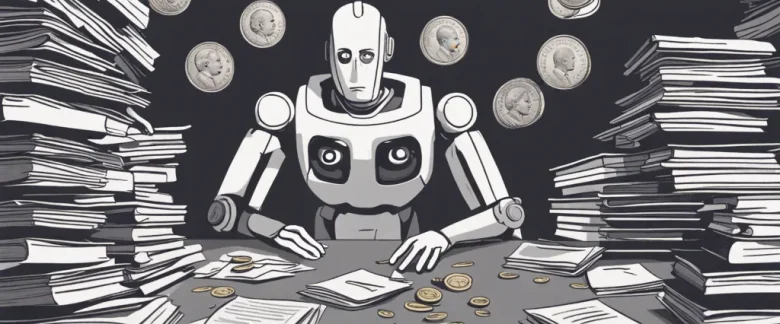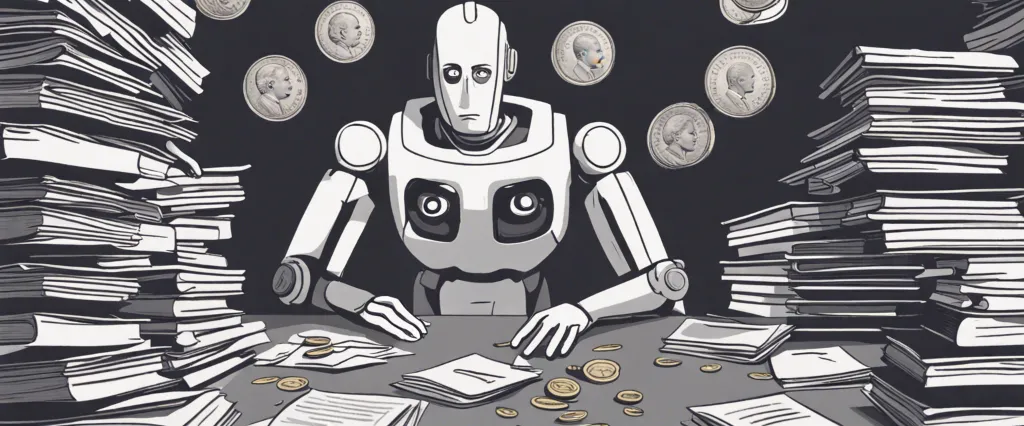In the thought-provoking book “Artificial Unintelligence: How Computers Misunderstand the World” by Meredith Broussard, the author delves into the intricate world of artificial intelligence (AI) and exposes its limitations, inaccuracies, and potential dangers. Broussard, a professor at the Arthur L. Carter Journalism Institute of New York University, combines her expertise in computer science and journalism to critically analyze the problems plaguing AI systems today. She challenges the prevailing notion that AI can solve all our problems while shedding light on the social, economic, and political implications of this pervasive technology. Through captivating anecdotes and rigorous research, Broussard unveils the misconceptions surrounding AI and advocates for a more informed and ethically-guided approach to its development and implementation.
Chapter 1: Introduction to Artificial Intelligence
Chapter 1 of the book “Artificial Unintelligence” by Meredith Broussard provides an introductory overview of artificial intelligence (AI) by addressing its history, defining key concepts, and discussing the prevalent myths surrounding AI.
The chapter begins with a brief history of AI, tracing its roots back to the 1950s and the exploration of computational thinking. Broussard highlights how AI has been portrayed as both a panacea for solving complex problems and a potential existential threat to humanity. She argues that these extreme perspectives have clouded our understanding of what AI truly is.
Next, the author defines AI as “human-built computer systems that perform tasks that would normally require human intelligence.” She emphasizes that AI does not possess actual intelligence but rather simulates or replicates human intelligence in specific domains. Broussard differentiates between narrow AI, which is designed to excel in a particular task, and general AI, which would encompass human-level intelligence across various domains.
Broussard addresses the mythology surrounding AI, dispelling some common misconceptions. She challenges the notion that AI possesses consciousness, emotions, or human-like decision-making abilities. The author emphasizes that AI is not inherently biased or neutral but reflects the biases present in the data it is trained on.
In conclusion, Chapter 1 of “Artificial Unintelligence” lays the foundation for understanding AI by unraveling the historical context, defining AI’s scope, and debunking common misconceptions. Broussard urges readers to critically analyze AI’s limitations and challenge the prevailing narratives surrounding this technology.
Chapter 2: The Myth of AI Superintelligence
Chapter 2 of “Artificial Unintelligence” by Meredith Broussard critiques the notion of AI superintelligence and highlights the myths surrounding it. Broussard argues that the concept of superintelligence, which suggests that AI will eventually surpass human intelligence and become an all-knowing entity, is flawed and not based on realistic assessments of AI capabilities.
The chapter begins by debunking the myth that AI is inherently smarter than humans. Broussard explains that AI is only programmed to solve specific problems within predefined boundaries and lacks the broader understanding and common sense that humans possess. AI systems heavily rely on data and algorithms, making them proficient in computational tasks but unable to replicate human-like general intelligence.
Furthermore, Broussard explores the limitations of AI algorithms. She emphasizes that AI can only make predictions based on patterns and correlations in past data, without truly comprehending the context or underlying causes. AI systems are prone to biases and errors, as they can perpetuate and amplify the biases present in the data they are trained on.
Broussard also addresses the fear of AI taking over jobs and society. She argues that while AI can automate certain tasks, it should be viewed as a tool that complements human abilities rather than a replacement for human labor. AI systems require human oversight and involvement to ensure ethical decision-making and accountability.
In conclusion, Broussard challenges the notion of AI superintelligence by highlighting its limitations and emphasizing the importance of human intelligence and critical thinking. She advocates for responsible and informed use of AI, debunking the dystopian view of AI dominance and encouraging a more balanced understanding of its capabilities.
Chapter 3: Bias and Discrimination in AI Systems
Chapter 3: Bias and Discrimination in AI Systems of the book “Artificial Unintelligence” by Meredith Broussard delves into the critical issues surrounding bias and discrimination embedded in artificial intelligence (AI) systems. Broussard sheds light on how these biases are perpetuated and the consequences they have on society.
The chapter begins by emphasizing that AI systems are not inherently neutral or objective but rather reflect the biases and values of their human creators. Broussard highlights the risks of insufficient representation and diversity among AI developers, resulting in biased algorithms that replicate and amplify existing societal prejudices. These biases often manifest in discriminatory outcomes, disproportionately impacting marginalized communities such as people of color, women, and the economically disadvantaged.
The author provides several case studies illustrating the biases present in AI systems. For instance, the algorithm used in the U.S. criminal justice system to predict recidivism rates was found to be racially biased, leading to unfair imprisonment of individuals from minority backgrounds. Similarly, facial recognition technology has been shown to misidentify people with darker skin tones at higher rates, leading to potential infringements on civil liberties and exacerbating racial profiling.
Broussard argues for greater transparency and scrutiny in AI implementation, emphasizing the need to question the datasets used to train AI systems and the potential impact on marginalized groups. She stresses the importance of diverse perspectives in creating AI systems to ensure fairness and mitigating bias. The chapter concludes by proposing the development of ethical guidelines and regulations to govern AI technologies.
In summary, chapter 3 of “Artificial Unintelligence” highlights the pervasive issue of bias and discrimination in AI systems. It emphasizes the need for awareness, scrutiny, and ethical considerations to address this critical problem and build more equitable AI systems that benefit all of society.
Chapter 4: The Illusion of Big Data

Chapter 4 of “Artificial Unintelligence” by Meredith Broussard explores the concept of the illusion of big data. Broussard argues that the belief that more data automatically leads to better results is a misconception. The chapter delves into the limitations and pitfalls of relying solely on big data.
Broussard starts by criticizing the assumption that big data is objective and neutral, highlighting that data is always collected and analyzed within a specific context and is subject to human biases and limitations. She explains that relying on big data without considering its context can lead to erroneous or misleading results.
The author also discusses the issue of data pollution, where irrelevant or inaccurate information is included in the dataset, leading to unreliable outcomes. She emphasizes that data quality is often overlooked in the pursuit of big data, compromising the reliability of any conclusions drawn.
Broussard then explores the problem of sample bias in big data analysis, explaining how existing inequalities and biases in society can be perpetuated by analyzing only the available data. She argues that big data often reflects existing prejudices and can reinforce stereotypes rather than challenging them.
Additionally, Broussard discusses the issue of correlation versus causation, explaining that just because two variables are correlated does not mean that one causes the other. Misinterpreting correlation as causation can lead to flawed conclusions and misguided actions.
The chapter concludes by underlining the importance of critical thinking when working with big data. Broussard argues that a better understanding of the limitations and biases inherent in big data is necessary to avoid the illusion of its infallibility. She advocates for a comprehensive and thoughtful approach that combines data analysis with domain expertise, contextual understanding, and ethical considerations.
Chapter 5: The Black Box Problem
Chapter 5: The Black Box Problem of the book Artificial Unintelligence by Meredith Broussard explores the challenges and consequences of employing machine learning algorithms in various industries without understanding how they arrive at their decisions. Broussard emphasizes the importance of transparency and accountability in these systems to avoid perpetuating bias or making faulty judgments.
The chapter begins by discussing the trend of relying on machine learning algorithms for decision-making processes across fields like criminal justice, finance, and education. However, Broussard stresses that these algorithms often operate as “black boxes,” meaning their inner workings are not fully understood or transparent to users. The inability to scrutinize the decision-making process of these algorithms raises concerns about fairness and accuracy.
Broussard highlights the dangers of this lack of transparency, pointing out cases where algorithms have unintentionally perpetuated biases against marginalized groups or made misguided predictions. Machine learning algorithms are only as good as the data they are trained on, and if that data is flawed or biased, the consequences can be severe.
The chapter also delves into the argument that the black box problem is a deliberate engineering choice. Corporations and government bodies may conveniently use the complexity of these algorithms as a shield to avoid accountability for their decisions. By keeping their methods undisclosed and claiming them to be proprietary, they escape scrutiny and potential legal challenges.
Broussard suggests solutions to address this black box problem, such as implementing regulations that require algorithmic transparency or providing explanations for their decisions. She also asserts the need for increased awareness and education about these issues among policy-makers, industry professionals, and the general public.
In summary, Chapter 5 of Artificial Unintelligence highlights the potential dangers and ethical implications of relying on opaque machine learning algorithms. Broussard emphasizes the critical importance of transparency in these systems to ensure fairness and accountability.
Chapter 6: Labor and Automation
Chapter 6: Labor and Automation of the book “Artificial Unintelligence” by Meredith Broussard explores the intersection of technology, labor markets, and automation. Broussard challenges the widespread belief that artificial intelligence (AI) and automation will lead to job loss. Instead, the chapter argues that individuals who adapt and learn to work alongside AI technologies will thrive in the future job market.
Broussard begins by delving into the history of automation, tracing it back to the Industrial Revolution. She compares the fears of technological unemployment in the past with the current anxieties surrounding AI and automation. The author emphasizes that while certain jobs may be rendered obsolete, new jobs will emerge in their place. Broussard highlights that automation tends to displace certain tasks within a job rather than rendering the entire occupation redundant. She explains how, historically, technology has changed the nature of work, rather than completely eliminating it.
The chapter also explores the concept of “complementarity” between humans and AI. Broussard argues that AI technologies are most successful when they enhance human labor rather than replace it. She presents various examples, including the advent of computer-assisted reporting in journalism and the use of AI tools in healthcare diagnosis to amplify and improve human capabilities.
Additionally, the chapter addresses the importance of education and skill development in adapting to an automated future. Broussard emphasizes that a well-rounded education that includes critical thinking, creativity, and problem-solving skills will prepare individuals for a future where AI and humans collaborate. She underscores the need for continued investment in education to equip workers with the skills necessary to navigate a rapidly evolving job market.
In summary, Chapter 6 of “Artificial Unintelligence” challenges the notion that AI and automation will lead to mass job loss. Instead, the author emphasizes the importance of adapting and leveraging AI technologies to enhance human labor. The chapter underscores the historical pattern of technology changing the nature of work rather than eliminating it entirely, and advocates for a balanced approach that combines human ingenuity with AI capabilities.
Chapter 7: Ethical Considerations in AI Development and Deployment
In Chapter 7 of “Artificial Unintelligence” by Meredith Broussard, the author delves into the crucial ethical considerations surrounding the development and deployment of artificial intelligence (AI). Broussard emphasizes the importance of approaching AI with a critical perspective, understanding its limitations and potential dangers.
She begins by discussing the ways in which AI systems often reinforce existing biases and inequalities. Broussard highlights that these biases can manifest in various stages of AI development, including data collection, algorithm design, and decision-making processes. She raises concerns about the impact of biased AI on marginalized communities and the potential for perpetuating discrimination.
Furthermore, Broussard addresses the issue of AI transparency and accountability. She argues that the lack of transparency in AI decision-making processes can lead to unjust outcomes, as individuals affected by these decisions often have little understanding of how they were reached. She advocates for increased transparency, opening up the “black box” of AI systems to scrutiny and evaluation.
The author also explores the complex issue of AI’s impact on jobs and the economy. She cautions against unchecked automation without proper consideration for potential job displacement, advocating for ethical and responsible deployment strategies that prioritize workers’ well-being.
One key aspect Broussard emphasizes is the need for diverse and inclusive perspectives in AI development. She argues that diverse teams can help mitigate the biases and limitations of AI systems, preventing them from becoming tools of oppression or exclusion.
Ultimately, Broussard calls for a comprehensive framework of ethical guidelines to govern AI development and deployment. She implores researchers, developers, and policymakers to prioritize accountability, transparency, fairness, and inclusivity to ensure that AI technologies serve the greater good and do not exacerbate societal inequalities.

Chapter 8: Human-Centered AI
Chapter 8: Human-Centered AI of the book Artificial Unintelligence by Meredith Broussard explores the concept of designing AI systems with a human-centered approach. The chapter emphasizes the importance of prioritizing human values and welfare when developing and implementing AI technologies.
Broussard highlights the risks of relying too heavily on automated decision-making systems, as they often lack the necessary ethical considerations and can perpetuate societal biases. She argues that human intelligence and judgment are crucial in making informed decisions and calls for AI systems to be designed as tools that augment human capabilities, rather than replacing them.
The chapter explores various examples where AI systems have failed due to their lack of human-centered design. Broussard discusses instances of self-driving car accidents, facial recognition technology misidentifying individuals, and flawed algorithms used in the criminal justice system. These examples demonstrate the urgent need for human oversight and intervention to prevent negative consequences.
Broussard suggests that humans should have control over AI systems and identifies three key principles for creating human-centered AI: transparency, accountability, and inclusion. She argues that AI systems should be transparent in their functioning and decision-making processes, accountable for any errors or biases, and created through inclusive practices that involve diverse perspectives and backgrounds.
The chapter also addresses the ethical implications of autonomous AI systems, such as killer robots and AI-driven warfare. Broussard advocates for ongoing public discussions and regulations to ensure that AI systems align with human values and avoid misuse or potential harm.
In summary, Chapter 8 of Artificial Unintelligence emphasizes the need for a human-centered approach to AI development and deployment. By prioritizing transparency, accountability, and inclusion, AI systems can be designed to support human intelligence and values, rather than replacing or endangering them.
After Reading
In conclusion, Artificial Unintelligence by Meredith Broussard offers a thought-provoking exploration of the limitations of artificial intelligence (AI) in today’s society. Through insightful analysis and real-world examples, the author challenges the prevailing notion that AI is infallible and capable of solving all problems. Broussard emphasizes the importance of understanding the biases and limitations of AI systems while advocating for a more critical and informed approach to its development and use. This book serves as a wake-up call, urging readers to question the hype surrounding AI and to recognize the need for human intelligence and ethics in tackling complex societal issues. By unpacking the myths and misunderstandings surrounding AI, Broussard encourages a more nuanced understanding of its capabilities and helps readers navigate the increasingly AI-driven world we live in. Overall, Artificial Unintelligence sheds light on the importance of embracing human intelligence in order to create a better future.
1. “Weapons of Math Destruction: How Big Data Increases Inequality and Threatens Democracy” by Cathy O’Neil – Similar to “Artificial Unintelligence,” this book explores the shortcomings and biases in the use of algorithms and big data, highlighting the potential negative consequences on society.
2. “Algorithms of Oppression: How Search Engines Reinforce Racism” by Safiya Umoja Noble – This book delves into how search engines, far from being neutral tools, contribute to perpetuating biases and reinforcing systemic discrimination.
3. “Automating Inequality: How High-Tech Tools Profile, Police, and Punish the Poor” by Virginia Eubanks – This book examines the impact of automated decision-making systems on marginalized communities, shedding light on how they perpetuate and exacerbate inequality.
4. “Data Feminism” by Catherine D’Ignazio and Lauren F. Klein – With a focus on gender and race, this book explores the intersection of data and society, aiming to amplify marginalized voices and advocate for ethical and inclusive data practices.
5. “Future Ethics: Technology and the Quest for Digital Responsibility” by Cennydd Bowles – Expanding on the ethical implications of technology, this book examines the challenges we face in designing and using technology responsibly, inviting readers to consider the consequences and benefits of emerging technologies.




